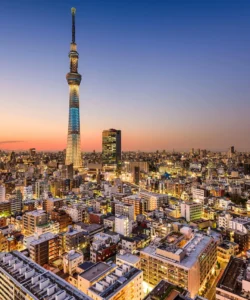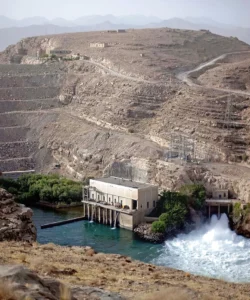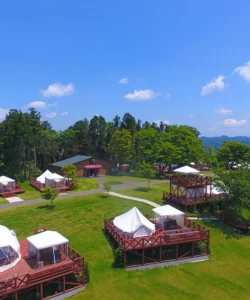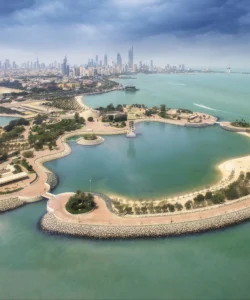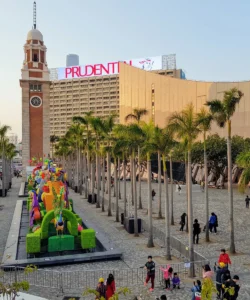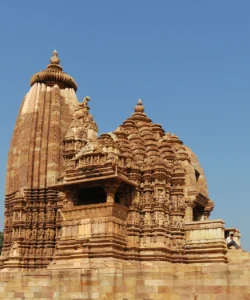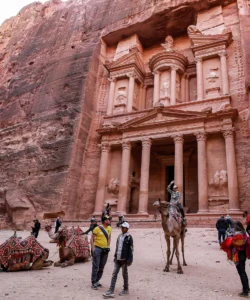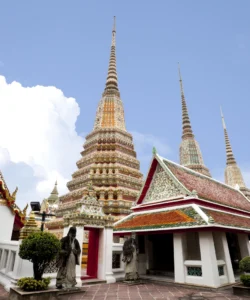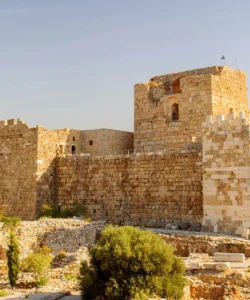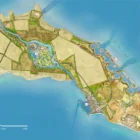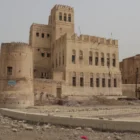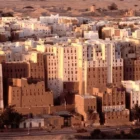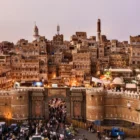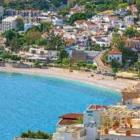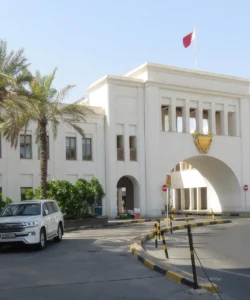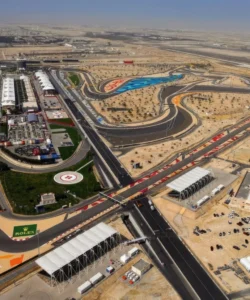Bahrain Fort, officially known as Qal’at al-Bahrain (Arabic: قلعة البحرين; Portuguese: Forte de Barém), is one of Bahrain’s most significant historical treasures and a UNESCO World Heritage Site. Located on the northern coast of Bahrain Island, this archaeological site is an artificial mound (tell) that holds layers of history spanning over 4,500 years, from the ancient Dilmun civilization to later occupations by Kassites, Greeks, Portuguese, and Persians.
Listen to an introduction about Bahrain Fort
Name and Address
- Name: Bahrain Fort (Qal’at al-Bahrain, also known as Portuguese Fort)
- Address: Situated in the village of Al Qalah, on the northern shore of Bahrain Island, Bahrain.
- Location: Approximately 6 km (4 miles) west of Manama, Bahrain’s capital.
How to Get There
Bahrain Fort is easily accessible from Manama and other parts of Bahrain.
- By Car/Taxi/Rideshare: This is the most common and convenient way to reach the fort. It’s about a 10-15 minute drive from central Manama.
- Public Transportation: Bus routes (e.g., A2, X2) also pass near Bahrain Fort, providing an economical option.
- Visitor Access:
- Bahrain Fort: The fort itself is generally freely accessible from morning until around 6:00 PM (some sources say 8:00 PM). It’s a vast ruin, allowing visitors to explore its courtyards, passages, and ramparts.
- Bahrain Fort Museum: A modern and well-curated museum is located adjacent to the fort. Entry to the museum requires an admission fee (approximately BHD 2 for foreigners). The museum typically operates from Tuesday to Sunday, 8:00 AM to 8:00 PM. It is highly recommended to visit the museum before exploring the ruins to gain a comprehensive understanding of the site’s layered history.
Landscape and Architecture
Bahrain Fort is built on a 12-meter (39 ft) high artificial mound (tell), a result of millennia of continuous human occupation. Its architecture reflects various influences from the different civilizations that controlled it.
- Artificial Mound (Tell): The fort sits atop a large tell, composed of seven stratified layers of human settlement dating from 2300 BC to the 18th century. Excavations have revealed remains of residential, public, commercial, religious, and military structures.
- Portuguese Fort (16th Century): The most visible structure today is the impressive 16th-century Portuguese fort, which gave the entire site its modern name. It is built predominantly of limestone and characterized by thick ramparts, defensive towers, and imposing gateways. The design shows an adaptation of European military engineering to the local environment.
- Ancient Ruins: Beyond the Portuguese fort, the archaeological site encompasses extensive ruins of the ancient Dilmun capital city, including the remains of dwellings, temples, markets, and an ancient lighthouse. These provide insight into the daily life and commercial practices of these early civilizations.
- Environmental Adaptation: The fort’s design incorporated techniques to withstand the harsh desert climate, such as thick walls to reduce heat absorption and strategic orientation for shade.
- Panoramic Views: From the ramparts of the fort, visitors can enjoy stunning panoramic views of the Arabian Gulf, the surrounding palm groves, and parts of Kuwait City.
What Makes It Famous
Bahrain Fort’s fame stems from its profound historical significance and its status as a UNESCO World Heritage Site:
- UNESCO World Heritage Site: Inscribed in 2005, it is recognized for its outstanding universal value as a testament to continuous human presence in the region for over 4,500 years.
- Ancient Dilmun Capital: It was once the capital of the Dilmun civilization, a major trading hub that connected Mesopotamia and the Indus Valley. This makes it a crucial site for understanding ancient trade networks and early urban development in the Persian Gulf.
- Layered History: The site provides a unique opportunity to literally walk through layers of history, with archaeological findings from various periods, including Dilmun, Tylos (Greek), Persian, and Islamic eras, culminating in the prominent Portuguese fortification.
- Strategic Importance: Its strategic location overlooking the sea has made it a vital port and fortress throughout history, controlling maritime trade routes.
- Archaeological Discoveries: Ongoing excavations continue to unearth a wealth of artifacts, offering invaluable insights into the diverse cultures that inhabited the site.
Differences from Some Other Landmarks
Bahrain Fort distinguishes itself from other regional landmarks in several ways:
- Deep Archaeological History vs. Modern Structures: Unlike contemporary landmarks like Kuwait’s Al Hamra Tower (a modern skyscraper) or traditional palaces like Kuwait’s Seif Palace (which is also historic but functions as an active government seat), Bahrain Fort is primarily an archaeological site. Its focus is on uncovering and preserving ancient civilizations rather than showcasing modern architectural feats or ongoing political functions.
- “Tell” Formation: The fact that it’s built on an artificial mound (tell) created by successive layers of human occupation is a unique archaeological feature, offering a tangible representation of continuous settlement over millennia. This contrasts with fortifications built on natural terrain or from a single period.
- Accessibility and Public Engagement: While the fort itself is free to explore, the presence of a dedicated, modern museum right next to the ruins enhances the visitor experience significantly, providing context and displaying artifacts. This integrated approach to historical interpretation might differ from other forts that are solely ruins or have limited interpretive facilities.
- Dilmun Civilization Link: Its strong connection to the ancient Dilmun civilization sets it apart from many other forts in the region, which may have different historical origins or periods of prominence.
Bahrain Fort Photos:































